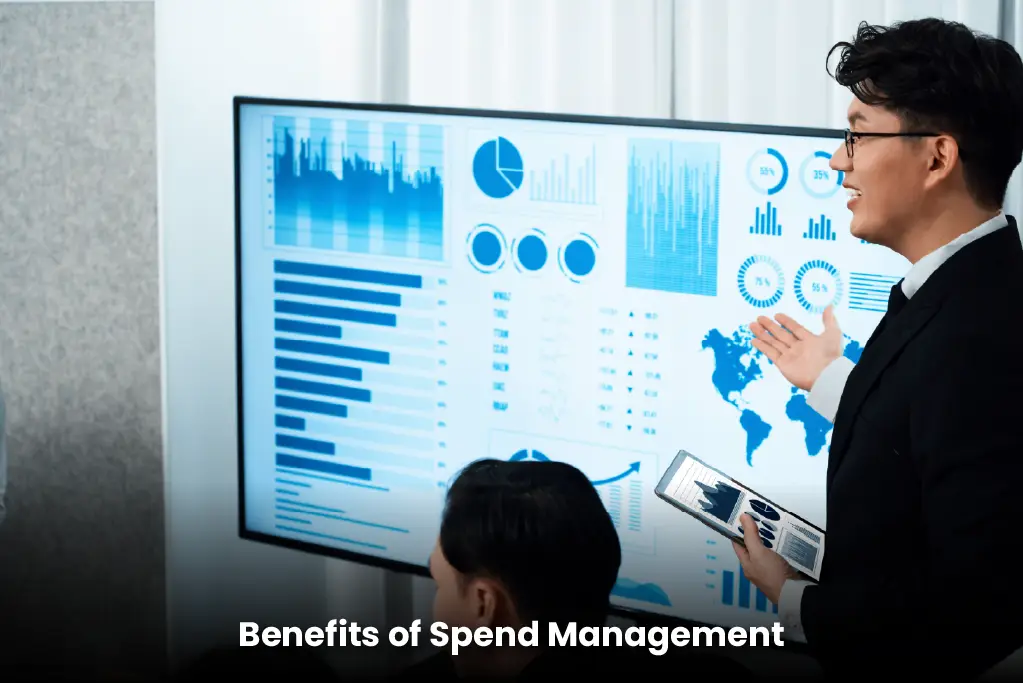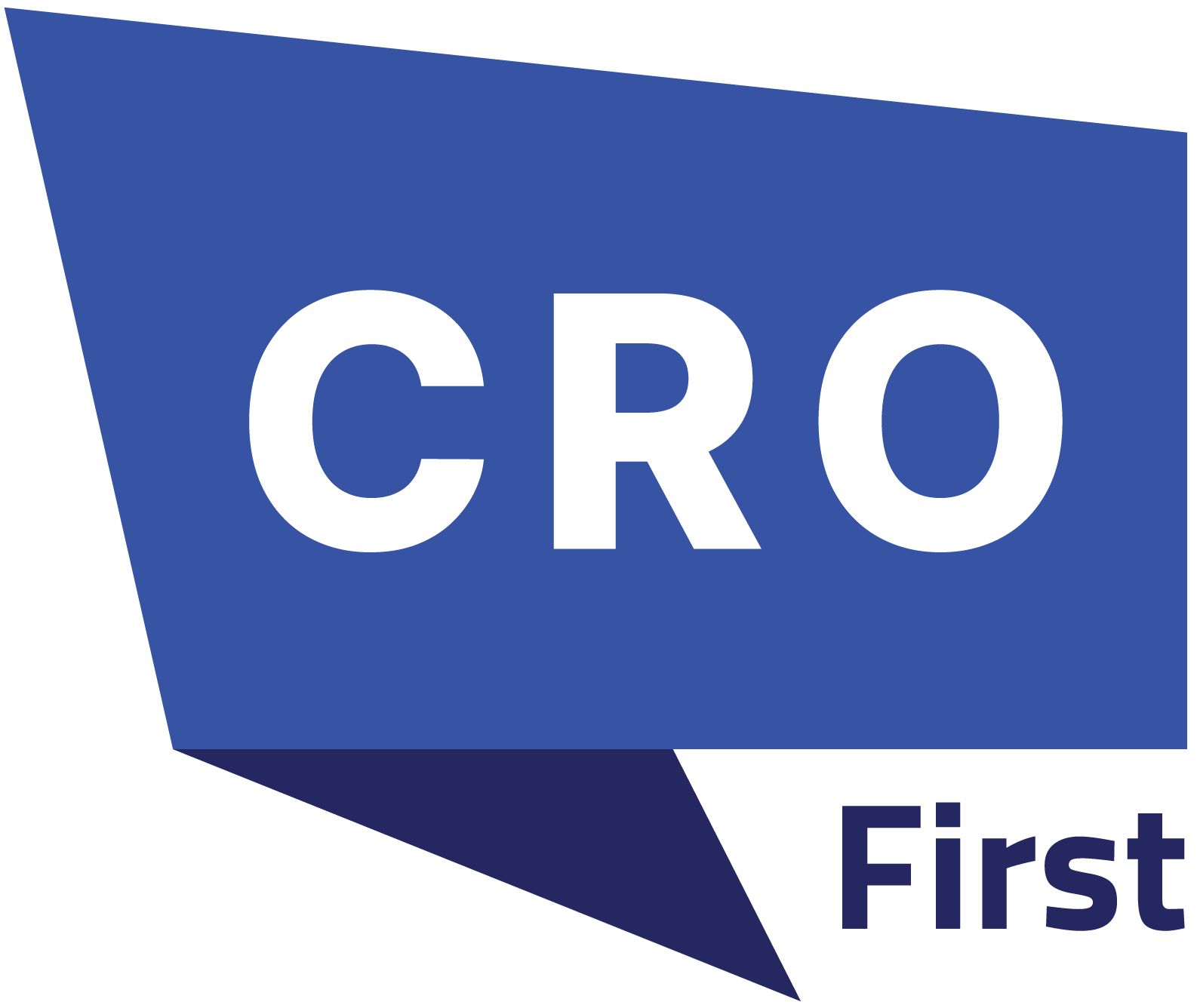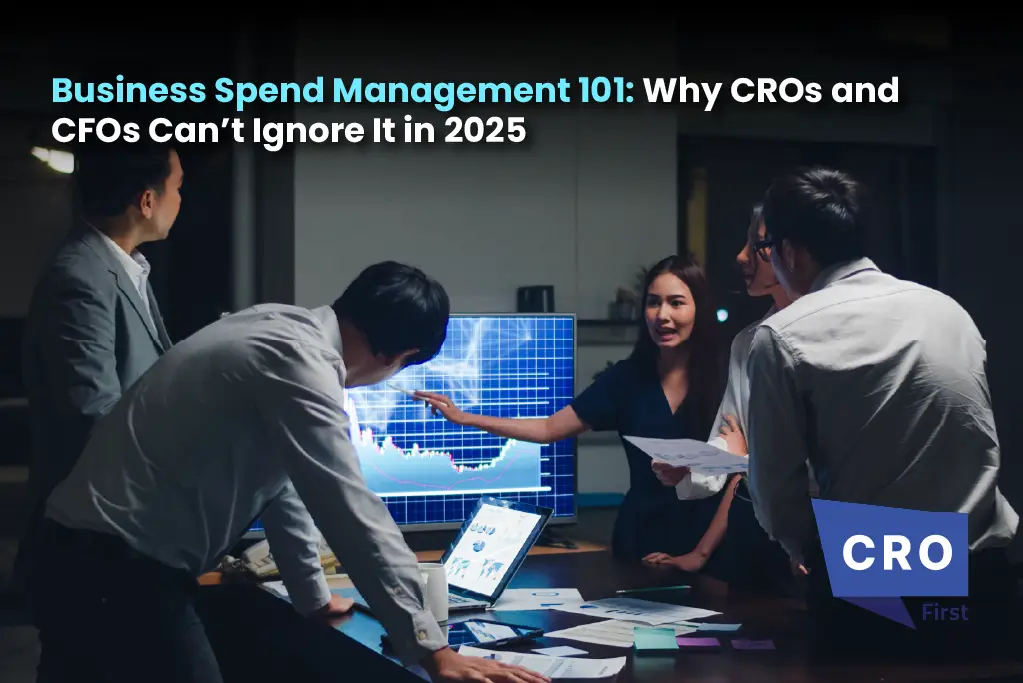When you run your expenditures wisely, you’re practicing true business spend management. Using BSM, you can better monitor your cash flow, save money, and be more efficient.
This may seem straightforward enough, but BSM is much more than just keeping track of invoices and receipts. The goal of BSM is to demonstrate precisely where your money goes, why it goes there, and whether it is being spent prudently.
Let’s explore the reasons why spend management is crucial for businesses.
What is Business Spend Management?
The technology and tactics a company employs to keep tabs on its expenditures are referred to as business spend management, or BSM.
The goal of BSM is to critically examine both the process of purchasing items and the amount of money you spend. Finding innovative methods to automate and speed up the purchasing process is just as important to your bottom line as reducing expenses.
You gradually begin to optimize your expenses’ return on investment (ROI) as a result of:
- spend only what is absolutely necessary
- reduced the amount of time and money needed to acquire the costs
- spending in line with financial and business objectives
- enhanced spend visibility facilitates data-driven decision-making
What Makes Spend Management Crucial?
A complex web of accounting tools that don’t perform well together is eventually created as a result of firms’ frequent need to integrate new and legacy systems to handle auxiliary tasks as they grow. Spending data from various sources within that network is gathered by BSM and used for the company’s benefit in ways that accumulate over time.
Saving money is one of such strategies, but there are many more. By highlighting opportunities for increased efficiency, insightful reporting on expenditures aids a business in making financial savings. The money saved can then be used for other fruitful endeavors. Transparency into methods to identify and reduce expenses that may have more significant effects as the company expands is provided by organized expense data.
Furthermore, since keeping track of and recording spending is essential to maximizing tax benefits and avoiding penalties, or being ready for an audit, BSM can be a huge help during tax season. Furthermore, suppliers are content partners for the company when they receive timely and complete payments, which can lead to advantageous pricing, discounts, and other long-term benefits.
Spend Categories for Businesses
Various costs will arise over the course of a company’s existence; some will be periodic or in response to changes in the business, while others will be constant and ongoing. However, all of this expenditure may be divided into two crucial categories: fixed vs variable and operating versus non-operating. Whether the cost is related to the company’s main business is indicated in the first category, and whether the expense type varies with production and service volume is described in the second.
All business expenses can be classified as either fixed or variable, and either operating or non-operating. Additionally, BSM allows for the independent tracking and analysis of each subcategory, as mentioned in an example below.
1. Operating Costs
These are the continuous expenditures resulting from a business’s regular, day-to-day operations. The direct costs of goods or services sold (COGS) and other selling, general, and administrative (SG&A) expenses fall under this category. This includes, for instance, rent and maintenance, payroll, insurance, marketing, advertising, raw materials, and depreciation.
2. Non-operating costs
These are business expenditures that have nothing to do with the company’s main functions. This category includes taxes, interest charges, impairment charges, and losses from asset sales.
3. Fixed costs
Expenses that remain constant regardless of the quantity of goods sold or services rendered are referred to as fixed costs. Regardless of the particular business activity, they must be paid. Because they are not related to the production of products or services, fixed expenses are typically indirect. Rent for offices and warehouses, as well as full-time employee salary and benefits, are examples of fixed expenditures.
4. Variable costs
A variable cost is an expense incurred by a business that varies according to the volume of goods or services produced or sold. Variable costs decrease with decreasing production and increase with increasing production. Raw materials, product packaging, business travel, credit card fees, and shipping costs are a few examples. Seasonal workers receive different pay than full-time workers, who often receive a set income.
Benefits of Spend Management

Unifying a company’s spending data into a single source for analysis that results in savings is the main advantage of BSM. However, BSM also simplifies procurement procedures by combining and digitizing anonymized cross-company data from a business’s supplier chain. As a result, businesses become quicker, more intelligent, and more responsible in their financial decisions.
The following are some advantages of this spending strategy:
● Enhanced Efficiency and Productivity
BSM saves teams a significant amount of time. Procurement automation streamlines processes and lowers human error, allowing staff to concentrate on higher-level tasks that advance the company. Leaders may estimate expenditure scenarios, take advantage of spending data trends, and measure internal performance with BSM’s comprehensive, real-time spending analysis, all of which help the company grow.
The U.S. Bureau of Labor Statistics, for instance, reports that in March 2025, the average cost of employee pay for employers was US$ 47.92 per hour worked. This includes benefit costs, which average US$ 15.00, and wages and compensation, which average US$ 32.92. These numbers demonstrate how much of a company’s expenses go toward paying its employees.
● Cost-saving Opportunities
Using BSM to collect and classify spending data provides insight into how departments, roles, and individuals are effectively managing business expenditures. Penn Procurement Services highlights how crucial expenditure analysis is in universities. Through a systematic analysis of spend data from all means of purchase and payment, firms can improve compliance and find new opportunities for cost containment and contracting.
By identifying chances for vendor consolidation, assisting staff in sticking to their spending plans, and identifying fraudulent invoices before they are paid, BSM software opens up new avenues for cost reductions.
● Risk Reduction
BSM software tracks transactions to check the credibility and financial performance of vendors. BSM reduces any risks to the company by giving current information on suppliers. To maintain the company’s good status with regulatory agencies, it also makes sure that internal control procedures and external audit standards are followed.
Spend Management Approaches
The very methodical approach to procurement that BSM takes is the foundation of its value. A corporation may gain the most from automating one or two procurement subprocesses, or the full spectrum, from strategic sourcing to payment processing (also known as ‘source to pay’), depending on its industry and the procedures it currently considers to be among its key capabilities. The following procedures and subprocesses make up BSM as it relates to procurement.
● Source to Pay (S2P)
Also referred to as S2P, source to pay is the entire procurement process, beginning with supplier identification, screening, and selection. An organization’s buyers seek out goods that satisfy their requirements for quality, appropriate pricing, and suppliers who can fulfill the company’s standards for timeliness, flexibility, etc. Subsequent actions include contract negotiations and establishment, order placement, delivery, collection, invoice acceptance, and payment settlement.
S2P enhances an organization’s process, regulatory, and contractual compliance; it increases supply chain partners’ cooperation and trust; it helps enterprises get better prices; and it provides business leaders with insight throughout the whole procurement process.
● Source to Contract
Similar to S2P, source to contract starts with locating goods or services from a range of competing suppliers. The needs of the company are examined, recorded, and distributed to possible suppliers, who are then asked for offers. The vendor who offers the most promising quote and best fits the needs of the company is given the contract. The source-to-contract subprocess concludes after a contract has been negotiated and signed.
● Invoice to Pay
Paying an invoice may initially appear to be a straightforward procedure that cannot be greatly enhanced by IT automation. However, depending on the company, correctly evaluating and paying invoices may need a number of crucial procedures, such as comparing the invoices to orders, contracts, and deliverables that have been accepted or refused, followed by one or more approvals. Automating this subprocess can help a company’s accounts payable team become more efficient as it expands.
● Procure to Pay (Also Known as Procure to Invoice)
To increase efficiency, the purchasing and accounts payable departments are integrated through the procure-to-pay subprocess. It excludes the function of sourcing vendors, in contrast to S2P. Requisitioning, buying, receiving, paying, and accounting for goods and services are all included in procure to pay.
Who Uses Business Spend Management?

Procurement teams have historically been in charge of spend management duties and obligations, but business spend management is distinct. Every department is involved at various points during the whole spend cycle. Each department’s leaders employ BSM technology as follows.
Chief Finance Officers (CFOs)
Increasing the bottom line is what CFOs seek. To achieve that, they require a comprehensive understanding of spending data in order to identify cost-cutting measures that do not impede the company’s ability to grow. However, using typical spend management techniques, they have to spend a lot of effort locating that data across several different platforms. By centralizing and analyzing that data, business spend management systems enable CFOs to have better control over spending throughout the whole company. It also helps them lower risk and enforce compliance.
Chief Procurement Officers (CPOs)
These days, procurement professionals’ strategic purchasing plans that manage risk, keep costs under control, and encourage supplier variety are essential for company continuity because such volatile market conditions are becoming the norm. CPOs, who frequently collaborate closely with sourcing, supply chain, and finance to do this, use business spend management technologies to automate compliance monitoring, obtain complete visibility into spending categories, and enforce spending best practices by making the purchasing process easier for all employees. They search for BSM software that makes it possible to integrate important procurement procedures such as purchasing, contracting, supplier payments, and invoice validation.
Chief Supply Chain Officers (CSCOs)
CSCOs strive to meet ESG standards, balance inventory, guarantee product availability, and control demand. But more lately, CSCOs have been working with chief financial officers to help enhance profitability, which makes sense given that supply chain costs can account for 20% of revenue. To obtain a comprehensive end-to-end perspective of the supply chain, they employ BSM tools. One of the most crucial tools is a digital twin, which is a digital model of the company’s supply chain. By simulating various cost-analysis scenarios in a risk-free testing environment, CPOs may better prepare for unforeseen disruptions.
Chief Information Officers (CIOs)
Enhancing a company’s key operational procedures or workflows is the goal of IT leaders. In order to facilitate quicker, more effective operations, they search for business spend management software that makes configuration simple. Optimizing data analytics is part of this. They can link data from various business processes and arrange it so that staff members can comprehend and act upon it with the use of BSM tools. CIOs assist executives throughout the company in selecting the best technology to meet their unique spending requirements while also integrating easily with the business’s existing ERP and tech stack.
Final Thoughts
Business spend management is no longer optional in 2025; it is necessary to boost productivity, cut expenses, and facilitate strategic decision-making throughout the company. BSM enables CFOs, CROs, and other executives to manage risks, improve supplier relationships, and maximize financial performance by offering visibility, control, and automation across all expenditure activities. Businesses will be better equipped to grow, develop, and keep a competitive edge in a business environment that is becoming more complicated if they implement a comprehensive BSM approach.

